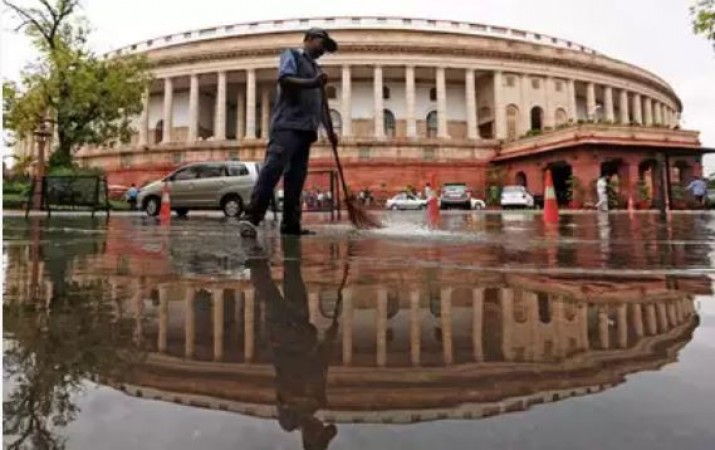
As India stands united to celebrate its Independence Day, it is an apt occasion to delve into the history of one of the most iconic symbols of our nation's democracy – the Indian Parliament House. This majestic edifice, where the echoes of debates, discussions, and decisions reverberate, has a remarkable story of its establishment and construction.
Inception of the Idea:
The idea of having a dedicated space to house the legislative bodies of independent India took shape well before the country's liberation. The need for a distinctive and representative structure where the voice of the people could be heard and policies could be formulated gained prominence during the final years of British colonial rule.
The Architectural Vision:
The task of designing the Parliament House was entrusted to the renowned British architect Edwin Lutyens, who is also credited with designing other landmarks in the capital city of New Delhi. The architectural plan envisioned a symmetrical and grand structure that would blend the classical and modern styles.
Construction Begins:
The construction of the Indian Parliament House commenced in the year 1921, with the laying of the foundation stone by the Duke of Connaught. It was part of the larger endeavor to establish New Delhi as the capital of India, replacing Kolkata (Calcutta) during British rule.
Symbolic Layout:
The design of the Parliament House was not only aesthetically pleasing but also laden with symbolism. The circular shape of the building was chosen to emphasize equality and inclusiveness, where every representative held an equal position and voice. The central hall, known as the Central Legislative Assembly Hall, became the nucleus of democratic discourse.
Historical Significance:
The construction of the Parliament House was a monumental endeavor, with artisans, laborers, and experts coming together to give life to Lutyens' vision. The project was a statement of India's determination to build a new nation with a vibrant democratic foundation.
Completion and Inauguration:
The construction of the Indian Parliament House was completed in 1927, and it was officially inaugurated on January 18, 1927, by Lord Irwin, the then Viceroy of India. The moment marked the beginning of a new era, where the seat of legislative power became a reality, representing the aspirations and hopes of a nation striving for progress and self-governance.
Evolution Over Time:
Over the years, the Indian Parliament House has witnessed historical events, debates, and landmark decisions. It evolved as a space where representatives from diverse backgrounds deliberated on matters of national importance. The architecture and interiors of the Parliament House bear witness to the changes in India's political landscape, reflecting the growth and maturation of the democratic process.
Modernization and Preservation:
As time progressed, the need arose to accommodate the increasing number of elected representatives. To cater to this demand, a new Parliament House is currently under construction, adjacent to the existing structure. While modernizing to meet contemporary needs, great care is being taken to preserve the historical and architectural significance of the original Parliament House.
The Lost Island: India's Unfortunate Tale of Coco Island
Commemorating Independence Day: Chandrashekhar 'Azad' and the Continuing Pursuit of Freedom
What you know about Mahatma Gandhi's Children ?
A Beacon of Democracy:
The Indian Parliament House stands as a testament to the resilience and determination of a nation that fought for its freedom and embraced democracy. It is not just a physical structure but a repository of aspirations, debates, and decisions that shape the course of our nation.
On this Independence Day, as we pay tribute to the visionaries and leaders who paved the way for our democratic journey, let us also salute the architectural marvel that continues to inspire generations and embodies the spirit of a free and sovereign India.